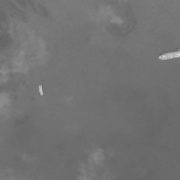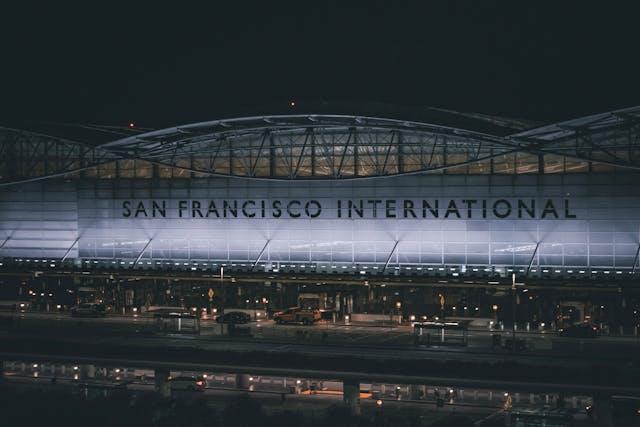Satellite images released by a Washington-based think tank confirm the reported presence of Chinese vessels near Pag-asa Island in the West Philippine Sea (South China Sea).
Images taken on Sunday, August 13 by the Asia Maritime Transparency Initiative (AMTI) of the Center for Strategic and International Studies (CSIS) show that nine Chinese fishing vessels and two Chinese Navy ships had been operating near Pag-asa island.
Also referred to as Tithu Island, Pag-asa Island is located 480 kilometers off the coast of Palawan. It is the largest Philippine-controlled island among the Kalayaan Island Group (KIG) in the disputed Spratlys region.
AMTI said on Thursday, August 18 that it is impossible of any of the ships are affiliated with the Chinese maritime militia but two “appear to be actively fishing, with their nets visibly in the water.”
The fishing vessels are reportedly “all located between one and five nautical miles” from Pag-asa Island, while the nearest military or law enforcement ship is located 3.6 nautical miles from the island.
The think tank said Chinese authorities are likely aware of the operation, citing the presence of naval vessels.
“The number and rapid coordination of naval and coast guard ships suggests that this was purposely organized in advance and was not just an ad hoc response by government vessels that happened to be in the area,” it added.
AMTI noted that “one possible explanation for the flotilla’s sudden and provocative appearance is that Beijing wanted to dissuade Manila from planned construction” on Pag-asa Island.
Philippine Defense Secretary Delfin Lorenzana previously announced that the government has allocated at least P1.6 billion ($31.08 million) for the repair and construction of facilities in the area.
“Those upgrades have been delayed, reportedly due to inclement weather, but Lorenzana has made clear that they remain in the pipeline. In light of this week’s events, Manila might feel that those upgrades are even more urgent,” AMTI added.
Earlier this week, Magdalo party-list Representative Gary Alejano released a timeline that reveals the presence of several Chinese vessels near Pag-asa Island, calling the incident “highly suspicious” and “a threat to our interest in the West Philippine Sea.”
The lawmaker then called on Philippine government officials “to be transparent in what is happening in the West Philippine Sea” and “assert our rights in the midst of talks with China.”
But Philippine Foreign Secretary Alan Peter Cayetano downplayed Alejano’s fears, saying that the situation in the area remains stable.
“There is no situation there that is a cause of lowering mutual trust between all of the claimants at this point in time,” Cayetano affirmed in a press conference on Wednesday, August 16.
The foreign secretary neither confirmed nor denied Alejano’s claim but noted that the “presence of ships alone does not mean anything.”
Cayetano also warned Alejano of portraying China as the “enemy.” He questioned why there is less concern when it’s the United States conducting freedom of navigation in Philippines-claimed area.
“Kasi they’re (Because Americans are) our allies so if we keep looking at China as the enemy, every time may movement sila, masyado tayo nagre-react (every time they have movement, we are exaggerating our reaction),” the foreign secretary remarked.
He continued, “It’s good we have people like Congressman Alejano who reminds us to monitor the situation. But there’s a thin line between informing us and stirring up the situation.”
Remaining firm on his stance, Alejano expressed disheartenment toward Cayetano’s statement. He insisted that the reported Chinese presence in the disputed waters “means something.”
“Have we already adopted the strategy of silence, inaction, and subservience in the West Philippine Sea so as not to offend China?” the lawmaker asked.
He also stressed that Washington’s operations are “not even comparable” to Beijing, pointing out that China “has the history of grabbing islands and harassing our fishermen.”
Earlier this month, Chinese Foreign Minister Wang Yi said that Beijing halted its land reclamation in the waters. China’s massive territorial claim in the South China Sea has been partly disputed by its neighboring countries, including the Philippines, Vietnam, Malaysia, and Brunei.
The Association of Southeast Asian Nations (ASEAN) is currently working with China on a Code of Conduct (COC) in the South China Sea, aiming to prevent the escalation of maritime conflicts in the contested waters.






